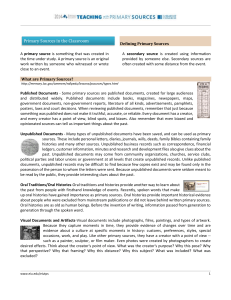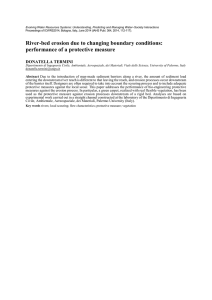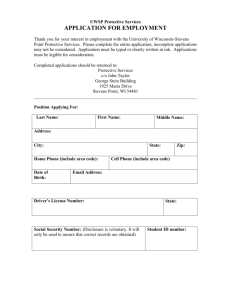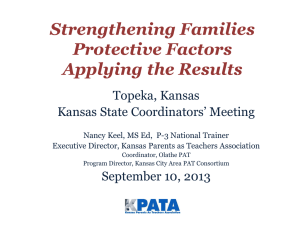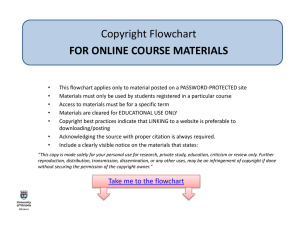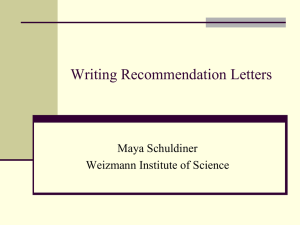MSDS - Element Raw Materials LTD
advertisement
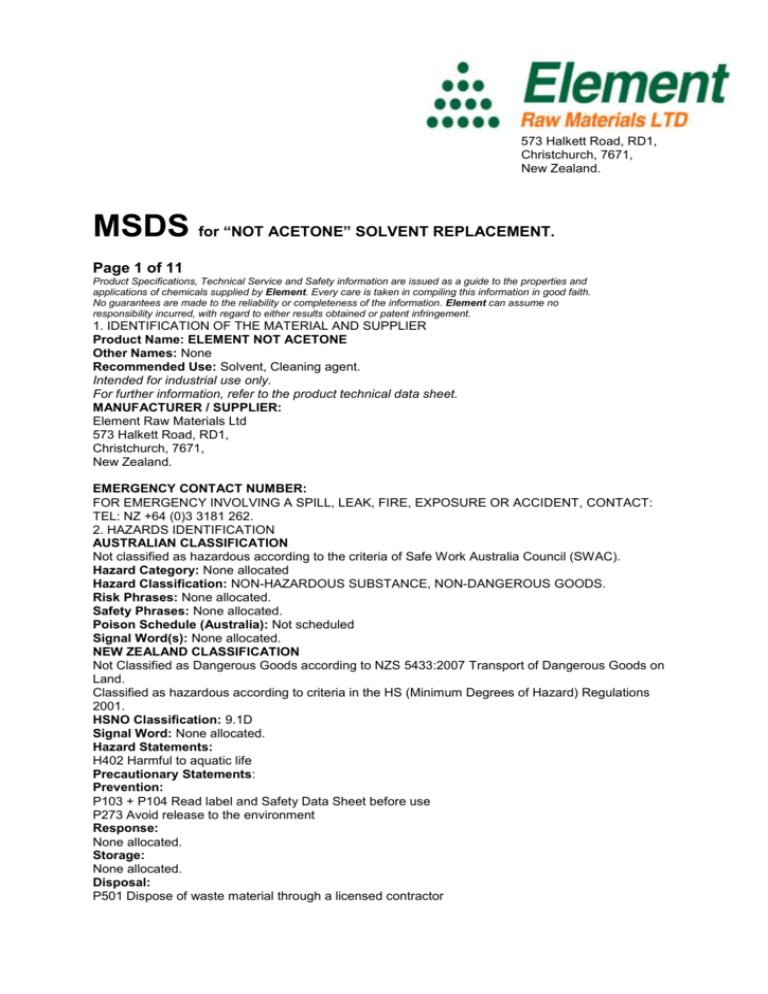
SAFETY DATA SHEET 573 Halkett Road, RD1, Christchurch, 7671, New Zealand. MSDS for “NOT ACETONE” SOLVENT REPLACEMENT. Page 1 of 11 Product Specifications, Technical Service and Safety information are issued as a guide to the properties and applications of chemicals supplied by Element. Every care is taken in compiling this information in good faith. No guarantees are made to the reliability or completeness of the information. Element can assume no responsibility incurred, with regard to either results obtained or patent infringement. 1. IDENTIFICATION OF THE MATERIAL AND SUPPLIER Product Name: ELEMENT NOT ACETONE Other Names: None Recommended Use: Solvent, Cleaning agent. Intended for industrial use only. For further information, refer to the product technical data sheet. MANUFACTURER / SUPPLIER: Element Raw Materials Ltd 573 Halkett Road, RD1, Christchurch, 7671, New Zealand. EMERGENCY CONTACT NUMBER: FOR EMERGENCY INVOLVING A SPILL, LEAK, FIRE, EXPOSURE OR ACCIDENT, CONTACT: TEL: NZ +64 (0)3 3181 262. 2. HAZARDS IDENTIFICATION AUSTRALIAN CLASSIFICATION Not classified as hazardous according to the criteria of Safe Work Australia Council (SWAC). Hazard Category: None allocated Hazard Classification: NON-HAZARDOUS SUBSTANCE, NON-DANGEROUS GOODS. Risk Phrases: None allocated. Safety Phrases: None allocated. Poison Schedule (Australia): Not scheduled Signal Word(s): None allocated. NEW ZEALAND CLASSIFICATION Not Classified as Dangerous Goods according to NZS 5433:2007 Transport of Dangerous Goods on Land. Classified as hazardous according to criteria in the HS (Minimum Degrees of Hazard) Regulations 2001. HSNO Classification: 9.1D Signal Word: None allocated. Hazard Statements: H402 Harmful to aquatic life Precautionary Statements: Prevention: P103 + P104 Read label and Safety Data Sheet before use P273 Avoid release to the environment Response: None allocated. Storage: None allocated. Disposal: P501 Dispose of waste material through a licensed contractor 3. COMPOSITION / INFORMATION ON INGREDIENTS SUBSTANCE NAME Proportion CAS Number Dimethyl 2-methylpentanedioate 60-100% 14035-94-0 *Non-hazardous ingredients Balance Not required * (Ingredients present at non-hazardous concentrations, according to criteria of SWAC (Australia), and the Hazardous Substances (Classification) Regulations 2001 (New Zealand), based on available information). 4. FIRST AID MEASURES Ingested: Do NOT induce vomiting. Never give anything by mouth if victim is semi-conscious or unconscious. Rinse mouth with water. Seek medical attention. Show this sheet to the doctor. Eye: If contact with the eye(s) occurs, flush the eye with copious amounts of water for at least 15 minutes holding eyelid(s) open. Take care not to rinse contaminated water into the non-affected eye. Remove contact lenses, if present and easy to do so. Continue rinsing. If symptoms persist seek medical attention. Show this sheet to the doctor. Skin: If skin contact occurs, remove contaminated clothing and footware, wash with plenty of soap and water. If symptoms develop seek medical attention. Clean contaminated clothing and footware before reuse or discard. In case of inflammation (redness, irritation, ...) obtain medical attention. Show this sheet to the doctor. Inhaled: If respiratory irritation or distress occurs remove victim to fresh air. Apply artificial respiration if not breathing. Seek medical attention if respiratory irritation or distress continues. Show this sheet to the doctor. First Aid Facilities: Emergency equipment and first-aid box with instructions should be readily available. Safety shower and eye fountain as collective emergency equipment. Medical conditions possibly aggravated by exposure: Skin contact may aggravate existing skin disease. Advice to Doctor: All treatments should be based on observed signs and symptoms of distress in the patient. Consideration should be given to the possibility that overexposure to materials other than this product may have occurred. Treat symptomatically. No specific antidote available. SAFETY DATA SHEET Further information: Use appropriate protective equipment when treating a contaminated person. Place contaminated clothing in a sealed bag for disposal. Poisons Information: For advice, contact a Poisons Information Centre (e.g. phone Australia 13 1126; New Zealand 0800 764 766) or a doctor (at once). 5. FIRE-FIGHTING MEASURES Extinguishing Media: - Suitable: Foam, Water Spray. Carbon Dioxide (CO2), Multi-purpose powders. - Not Suitable: High volume water jet. Hazards From Combustion Products: Combustible. However, does not present any particular risk in the event of a fire. On combustion, toxic gases are released. On combustion or on thermal decomposition (pyrolysis) releases Carbon oxides (CO + CO 2). Precautions for Fire Fighters and Special Protective Equipment: Fire fighters to wear full protective clothing and self-contained breathing apparatus (SCBA) in confined spaces, oxygen deficient atmospheres or if exposed to products of decomposition. If safe to do so, move undamaged containers from fire area. Stay upwind. Evacuate the personnel away from the fumes. If possible to do so safely, shut off fuel to fire. In case of fire close by, cool down the containers/equipment exposed to heat with a water spray. Product will burn under fire conditions. Do not dispose of fire-fighting water in the environment. HAZCHEM CODE: None allocated. Flash point: 98 0C (Closed cup) 6. ACCIDENTAL RELEASE MEASURES PERSONAL PRECAUTIONS: Avoid contact with the skin and the eyes. Do not breathe vapour. Do not allow uncontrolled discharge of product into the environment. Personal protective equipment: - Wear suitable protective equipment. - Wear suitable gloves. - Safety glasses For further information, refer to section 8 "Exposure Controls / Personal Protection". Stop the leak. Turn leaking containers leak-side up to prevent the escape of liquid. ENVIRONMENTAL PRECAUTIONS: Prevent product from entering drains. Do NOT discharge into drains or rivers. For a large spillage, contain the spillage by bunding. METHODS FOR CLEANING UP: - Recovery: Contain spillage, soak up with non-combustible absorbent material, (e.g. sand, earth, diatomaceous earth, vermiculite) and transfer to a container for disposal according to local / national regulations. Keep in suitable, closed containers for disposal. - Cleaning/Decontamination: Wash off with plenty of water. Recover the cleaning water for subsequent disposal. - Disposal: Dispose of all contaminated materials in accordance with current regulations. (Refer to section 13 "Disposal Considerations"). SAFETY DATA SHEET 7. HANDLING AND STORAGE PRECAUTIONS FOR SAFE HANDLING Safe handling advice : Handle and use in accordance with good occupational hygiene and safety practice. Take all necessary precautions to avoid the accidental release of the product outside, due to the rupture of containers or transfer systems. For further information, refer to section 8 "Exposure Controls / Personal Protection". CONDITIONS FOR SAFE STORAGE Technical measures: Take all necessary precautions to avoid the accidental release of the product outside, due to the rupture of containers or transfer systems. Storage conditions Stable under normal conditions. Keep container tightly closed. Keep in a well-ventilated place. Keep in a dry, cool place. Keep away from heat and sources of ignition. Keep away from incompatible materials such as strong oxidizing agents (see Section 10 "Stability and Reactivity"). Store in original container. Australia: Classified as a Class C1 (COMBUSTIBLE LIQUID) for the purpose of storage and handling, in accordance with the requirements of Australian Standard AS1940 - The storage and handling of flammable and combustible liquids. This product should be stored and used in a wellventilated area away from naked flames, sparks and other sources of ignition. Dangerous Goods - Initial Emergency Response Guide (IERG) (SAA/SNZ HB76) Not applicable. 8. EXPOSURE CONTROLS / PERSONAL PROTECTION National Exposure Standards No exposure standards assigned to this specific material by the Safe Work Australia Council (SWAC), or the New Zealand Occupational Safety & Health Service (OSH). Surveillance procedures: The recommended limits SHOULD NOT be exceeded. The user is responsible for monitoring the working environment in accordance with local laws and regulations. Engineering Controls Ensure good ventilation of the work station. Provide sufficient ventilation to keep airborne levels below the exposure limits and as low as practicable. Where engineering controls are indicated by use conditions or a potential for excessive exposure exists, the following traditional exposure control techniques may be used to effectively minimize employee exposures: Fume extraction at emission point. Biological Limit Values: No biological limit allocated. Personal Protection Equipment HAND PROTECTION: Glove material: Butyl-rubber Protective index Class: 6 Break through time: > 480 min Glove thickness: 0.5 mm Impermeable protective gloves must be chosen according to the function of the work station: other chemicals which may be handled, physical protection necessary (resistance to cutting, puncture, heat), dexterity required. The selection of gloves must take into account the extent and duration of use at the workstation. Final choice of appropriate gloves will vary according to individual circumstances i.e. methods of handling or according to risk assessments undertaken. It is advisable that a local supplier of personal protective clothing is consulted regarding the choice of material. Gloves must be inspected prior to use. Reference should be made to AS/NZS 2161.1: Occupational protective gloves - Selection, use and maintenance. EYE/FACE PROTECTION: Safety glasses with side shields, or splash-proof chemical goggles, and a full-face shield. Final choice of appropriate eye/face protection will vary according to individual circumstances i.e. methods of handling or engineering controls and according to risk assessments undertaken. Eye protection should conform with Australian/New Zealand Standard AS/NZS 1337.1 Personal eye protection Eye and face protectors for occupational applications. RESPIRATORY PROTECTION: Avoid breathing of vapours/mists. If engineering controls are not effective in controlling airborne exposure then respiratory protective equipment should be used suitable for protecting against airborne contaminants: Filtering respiratory protective device with a specific gas canister. Correct fit is essential to obtain adequate protection. If entering spaces where the airborne concentration of a contaminant is unknown then the use of a self-contained breathing apparatus (SCBA) with positive pressure air supply complying with AS/NZS 1715 / 1716, or any other acceptable International Standard is recommended. Final choice of appropriate respiratory protection will vary according to individual circumstances i.e. methods of handling or engineering controls and according to risk assessments undertaken. Reference should be made to Australian/New Zealand Standards AS/NZS 1715, Selection, Use and maintenance of Respiratory Protective Devices; and AS/NZS 1716, Respiratory Protective Devices. SKIN and BODY PROTECTION: Protective suit. Choose body protection according to the amount and concentration of the substance at the work place. Consideration must be given to both durability as well as permeation resistance. Launder contaminated clothing before reuse. It is advisable that a local supplier of personal protective clothing is consulted regarding the choice of material. Selection Criteria: Protective equipment must be chosen according to current AS/NZS standards and in cooperation with the supplier of protective equipment. Personal protective equipment must be defined after risk assessment for the workstation. Workplace Hygiene Measures: Use clean and correctly maintained personal protective equipment. Keep personal protective equipment in a clean place, away from the work area. Personal hygiene is an important work practice exposure control measure and the following general measures should be taken when working with or handling this material: - After each use, always wash personal protective equipment. - Always wash your hands after handling the product. - Do NOT eat or drink in the workplace. Collective emergency equipment: Personal protective equipment available close by in case of emergency. Emergency equipment, first-aid box with instructions readily available, safety shower and eye fountain for collective emergency. Further information: The user is responsible for monitoring the working environment in accordance with local laws and regulations. 9. PHYSICAL AND CHEMICAL PROPERTIES Appearance : Colourless liquid with a characteristic odour. pH : 5.0 Freezing Point : < -75 0C Boiling Point : 215.6 0C. Flash Point : 98 0C (Closed Cup) SAFETY DATA SHEET Autoignition Temp : 430°C Oxidizing Properties : Not considered as oxidizing, Structure-activity relationship (SAR) Solubility in Water : 25g/L @ 20 0C. Solubility in Organic Solvents : Soluble in organic polar solvents. Completely miscible in Aromatic hydrocarbons Octanol/water partition coefficient : 0.89 (log POW) @ 25 0C Vapour Pressure : 0.063 hPa @ 20 0C Relative density (water = 1) : 1.0553 Surface tension : 64 mN/m @ 20.7 0C Explosion properties : negative Mechanical sensitivity (shock) negative Thermal sensitivity 10. STABILITY AND REACTIVITY CHEMICAL STABILITY: Stable under normal conditions. CONDITIONS TO AVOID: Excessive heat, open flame and spark. Incompatible materials. INCOMPATIBLE MATERIALS: Strong oxidizing agents. HAZARDOUS DECOMPOSITION PRODUCTS: On combustion or on thermal decomposition (pyrolysis) releases Carbon Oxides (CO + CO 2). HAZARDOUS REACTIONS: Hazardous polymerisation will not occur. 11. TOXICOLOGICAL INFORMATION ACUTE HEALTH EFFECTS: Swallowed: Ingestion of this product may irritate the gastric tract causing nausea and vomiting. Eye: Eye contact may cause redness, itching and irritation. Skin: Skin contact may cause redness, itching and irritation. Inhaled: Inhalation of product vapours may cause irritation of the nose, throat and respiratory system. Chronic: No information available. SAFETY DATA SHEET Toxicological Data: Acute oral toxicity: LD50: > 2,000 mg/kg - rat: No mortality observed at this dose. Not classified as harmful if swallowed. (Unpublished internal reports) Acute inhalation toxicity: LC50 - 4 h: > 5.6 mg/l - rat: No mortality observed at this dose. Not classified as harmful by inhalation. (Unpublished internal reports) Acute dermal toxicity: LD50: > 2,000 mg/kg - rat: No mortality observed at this dose. Not classified as harmful by contact with skin. (Unpublished internal reports) Local effects Skin irritation (rabbit): No skin irritation (Unpublished internal reports) Eye Irritation (rabbit): No eye irritation (Unpublished internal reports) Sensitisation: Local lymph node assay - mouse: not sensitising (Unpublished internal reports) Repeated dose toxicity: Oral exposure 28 - 45 Days - rat: NOAEL: 300 mg/kg Method: According to OECD method 422 No systemic toxicity observed. (Unpublished internal reports) If inhaled 90 Days - rat: Vapour Aerosol at high levels Possible effects on the olfactory epithelium. No systemic toxicity observed. (Unpublished internal reports) STOT - single exposure: Toxicology Assessment: The substance or mixture is not classified as specific target organ toxicant, single exposure. STOT - repeated exposure: Toxicology Assessment: The substance or mixture is not classified as specific target organ toxicant, repeated exposure. Carcinogenicity: no data available Mutagenicity: Genotoxicity in vitro: Ames test: with or without metabolic activation: negative (Unpublished internal reports) Mutagenicity (in vitro mammalian cytogenetic test): Strain: Human lymphocytes: with or without metabolic activation: negative (Unpublished internal reports) Genotoxicity in vivo: In vivo micronucleus test - mouse Intraperitoneal route: ambiguous (Unpublished internal reports) In vivo micronucleus test - mouse Intraperitoneal route: negative (Unpublished internal reports) Reproductive toxicity: rat Oral exposure Method: According to OECD method 422: no impairment of fertility has been observed (Unpublished internal reports) Developmental Toxicity / Teratogenicity: rat Oral exposure NOAEL teratogenicity: 1,000 mg/kg rat Oral exposure NOEL maternal: 300 mg/kg Method: OECD Test Guideline 414 no embryotoxic or teratogenic effects have been observed (Unpublished internal reports) rabbit Oral exposure NOAEL teratogenicity: 300 mg/kg rabbit Oral exposure NOEL maternal: 100 mg/kg Method: OECD Test Guideline 414 no embryotoxic or teratogenic effects have been observed (Unpublished internal reports) Experience with human exposure: Ingestion: Symptoms: Vomiting 12. ECOLOGICAL INFORMATION Ecotoxicity: Effects on the aquatic environment: Toxicity to fish: LC50 - 96 h: 56 mg/l - Oncorhynchus mykiss (rainbow trout) (Unpublished internal reports) Toxicity to daphnia and other aquatic invertebrates. EC50 - 48 h: > 100 mg/l - Daphnia magna (Water flea) (Unpublished internal reports) Toxicity to aquatic plants EC50 - 72 h: > 60 mg/l - Pseudokirchneriella subcapitata (Unpublished internal reports) Ecotoxicity assessment: Harmful to aquatic organisms. SAFETY DATA SHEET Persistence / Degradability: Biodegradability: Readily biodegradable Ultimate aerobic biodegradability: 74 % - 28 d Method: OECD Test Guideline 301 (Unpublished internal reports) Mobility: Distribution among environmental compartments: Log Koc: < 1.25 Highly mobile in soils (Unpublished internal reports) Known distribution to environmental compartments: Ultimate destination of the product: Water Bioaccumulation: Octanol/water partition coefficient: Not potentially bioaccumulable (Unpublished internal reports) Other adverse effects: Environment assessment: Not classified as Dangerous for the Environment, according to EC criteria. Environmental Protection: Avoid contaminating waterways, drains and sewers. 13. DISPOSAL CONSIDERATIONS RESIDUES FROM PRODUCT Prohibition: Do NOT discharge into drains. Should not be released into the environment. Destruction/Disposal: Chemical additions, processing or otherwise altering this material may make the waste management information presented in this SDS incomplete, inaccurate or otherwise inappropriate. Dispose of in accordance with relevant national and local regulations, EPA requirements and safety regulations at an authorised site. CONTAMINATED PACKAGING Prohibition: Do not dispose of the product at a rubbish tip. Decontamination/Cleaning: Completely empty the packaging prior to decontamination. Carefully drain and then steam clean. Container Handling and Disposal: Recycle following cleaning or dispose of at an authorised site. Further Information: In accordance with ADG 7 and NZS 5433:2007 regulations containers or tankers which have not been cleaned or deodorized and which previously contained a hazardous product, must either be labelled or have hazard signs. NOTE: The user's attention is drawn to the possible existence of local regulations regarding disposal. 14. TRANSPORT INFORMATION UN Number: None allocated Proper Shipping Name: None allocated Dangerous Goods Class: None allocated Subsidiary risk: None allocated Packing Group: None allocated Hazchem Code: None allocated Road and Rail Transport: (Australia) Not classified as a Dangerous Good according to the Australian Code for the Transport of Dangerous Goods by Road and Rail (ADG Code) for transport by road and rail. SAFETY DATA SHEET Land Transport: (New Zealand) Not classified as Dangerous Goods according to NZS 5433:2007 Transport of Dangerous Goods on Land. Marine Transport: Not classified as a Dangerous Good according to the International Maritime Organization Rules (Maritime Dangerous Goods Code - IMDG Code) for transport by sea. Marine pollutant: NO Air Transport: Not classified as a Dangerous Good according to the International Civil Aviation Organization (ICAO) and International Air Transport Association (IATA) Dangerous Goods Regulations for transport by air. NOTE: The above regulatory prescriptions are those valid on the date of publication of this SDS. Given the possible evolution of transport regulations for hazardous materials, it would be advisable to check their validity with your sales office. 15. REGULATORY INFORMATION Poison Schedule (Australia): Not scheduled HSNO Group: This substance falls under the HSNO Additives, Process Chemicals and Raw Materials (Subsidiary Hazard) Group Standard 2006. HSNO Approval Number: The HSNO Approval Number for this Group Standard is HSR002503. Approved handler requirements Substances covered under this Group Standard will not require an approved handler. Inventory Status: Inventory Status Australia (AICS) Y New Zealand (NZIoC) Y Y = All ingredients are on the inventory. P = One or more ingredients fall under the polymer exemption or are on the no longer polymer list. All other ingredients are on the inventory or exempt from listing. N = Not determined or one or more ingredients are not on the inventory and are not exempt from listing. NOTE: The regulatory information given above only indicates the principal regulations specifically applicable to the product described in the Safety Data Sheet. The user's attention is drawn to the possible existence of additional provisions which complete these regulations. Refer to all applicable national, international and local regulations or provisions. 16. OTHER INFORMATION Reasons For Revision: 1) Review against current SWAC / NOHSC and ERMA / HSNO criteria and latest information from manufacturer. 2) Changes and / or additions made to all Sections. The customer is advised to consult the product Technical Data Sheets for further information including advice on suitable equipment. SDS's are updated frequently. Please ensure that you have a current copy. SAFETY DATA SHEET Key Legend Information: ACGIH - American Conference of Governmental Industrial Hygienists AICS - Australian Inventory of Chemical Substances ASCC - Australian Safety and Compensation Council CAS - Chemical Abstracts Service EPA - Environmental Protection Agency [Int] ERMA - Environmental Risk Management Authority [NZ] EU - European Union GHS - United Nations - Globally Harmonized System of Classification and Labelling of Chemicals[Int] HSNO - Hazardous Substances and New Organisms [NZ] IACR - International Agency for Research on Cancer IATA - International Aviation Transport Authority [Int] ICAO - International Civil Aviation Organization [Int] IMDG - International Maritime Dangerous Goods [Int] IMO - International Maritime Organisation. [Int] NTP - National Toxicology Program NIOSH - National Institute for Occupational Safety and Health [US] NOHSC - National Occupational Health & Safety Commission NZIoC - New Zealand Inventory of Chemicals [NZ] OSHA - Occupational Safety and Health Administration [US] SUSMP - Standard for the Uniform Scheduling of Medicines and Poisons [Aust][Formerly SUSDP] STEL - Short Term Exposure Limit [Int] SWAC - Safe Work Australia Council [Formerly ASCC] TWA - Time Weighted Average [Int] WES - Workplace Exposure Standard [NZ] [Aust/NZ] = Australia/New Zealand [Int] = International [US] = United States of America Principal References: Information supplied by manufacturer, reference sources including the public domain. The information herein is given in good faith but no warranty is expressed nor implied. END OF SAFETY DATA SHEET
